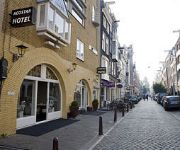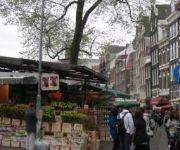Facts and Data
Webpages:
Official Unesco Page
View photos from OUR PLACE the World Heritage collection
Amsterdam.nl
Basis Data:
Unesco World heritage since: 2010
Size of heritage: 198 ha
- Buffer zone: 482 ha
Coordinates:
Longitude: 4,888°
Latitude: 52,365°
Summary
The historic urban ensemble of the canal district of Amsterdam was a project for a new ‘port city’ built at the end of the 16th and beginning of the 17th centuries. It comprises a network of canals to the west and south of the historic old town and the medieval port that encircled the old town and was accompanied by the repositioning inland of the city’s fortified boundaries, the Singelgracht. This was a long-term programme that involved extending the city by draining the swampland, using a system of canals in concentric arcs and filling in the intermediate spaces. These spaces allowed the development of a homogeneous urban ensemble including gabled houses and numerous monuments. This urban extension was the largest and most homogeneous of its time. It was a model of large-scale town planning, and served as a reference throughout the world until the 19th century.
Location on Map
Show bigger map on Openstreetmap
Seventeenth-Century Canal Ring Area of Amsterdam inside the Singelgracht
The Seventeenth-Century Canal Ring Area of Amsterdam inside the Singelgracht is a UNESCO World Heritage site located in the Netherlands. This historic area, also known as the Amsterdam Canal Belt, is situated in the heart of the city and is renowned for its unique urban planning and architectural significance.
History
The construction of the canal ring area began in the early 17th century during the Dutch Golden Age, a period of economic prosperity and cultural flourishing in the Netherlands. The city of Amsterdam, being a major trading hub, experienced rapid growth and expansion during this time. To accommodate the increasing population and facilitate trade, a comprehensive urban plan was devised.
The canal ring area was designed by city planner Hendrick Jacobszoon Staets and engineer Jan Adriaanszoon Leeghwater. The plan involved the creation of a series of concentric canals, forming semi-circular rings around the historic city center. These canals, named Herengracht, Keizersgracht, and Prinsengracht, were lined with elegant merchant houses and warehouses.
The construction of the canal belt was a massive engineering feat, involving the draining of swampland and the creation of artificial islands. The canals were meticulously designed with uniform width and depth, allowing for efficient transportation and trade. The architectural style of the buildings along the canals reflects the prosperity and artistic taste of the Dutch Golden Age.
Current State
Today, the Seventeenth-Century Canal Ring Area of Amsterdam inside the Singelgracht remains an iconic symbol of the city's rich history and cultural heritage. The area is a vibrant and bustling part of Amsterdam, attracting both locals and tourists alike.
The canal belt is home to numerous historic buildings, many of which have been well-preserved and restored. These buildings showcase a variety of architectural styles, including Dutch Renaissance, Baroque, and Classicism. The facades of the houses feature ornate gables, intricate carvings, and decorative elements, providing a visual feast for visitors.
The canals themselves continue to serve as important transportation routes and are a popular means of exploring the city. Canal cruises offer tourists a unique perspective of Amsterdam's architectural splendor and allow them to appreciate the city's layout from the water.
The area surrounding the canal belt is a vibrant neighborhood, with a mix of residential, commercial, and cultural establishments. The streets are lined with charming cafes, boutiques, art galleries, and museums. The Anne Frank House, located on Prinsengracht, is a significant historical site that attracts millions of visitors each year.
Preservation efforts have been undertaken to maintain the authenticity and integrity of the canal ring area. Strict regulations govern the renovation and restoration of buildings, ensuring that the architectural heritage is preserved for future generations.
In conclusion, the Seventeenth-Century Canal Ring Area of Amsterdam inside the Singelgracht is a UNESCO World Heritage site that showcases the city's rich history and architectural splendor. Its well-preserved canals, historic buildings, and vibrant atmosphere make it a must-visit destination for anyone seeking to immerse themselves in Amsterdam's cultural heritage.
Hotels and places to stay
City Centre Apartments Jolanda
Dutch Masters Amsterdam
Hotel Seven One Seven
Leidse Square Apartments
Mozart
Acostar Hotel Amsterdam
Quentin Golden Bear
Quentin Golden Bear
Flower Market Hotel Amsterdam
Amsterdam Hostel Orfeo
Videos from the area
Videos provided by Youtube are under the copyright of their owners.



















